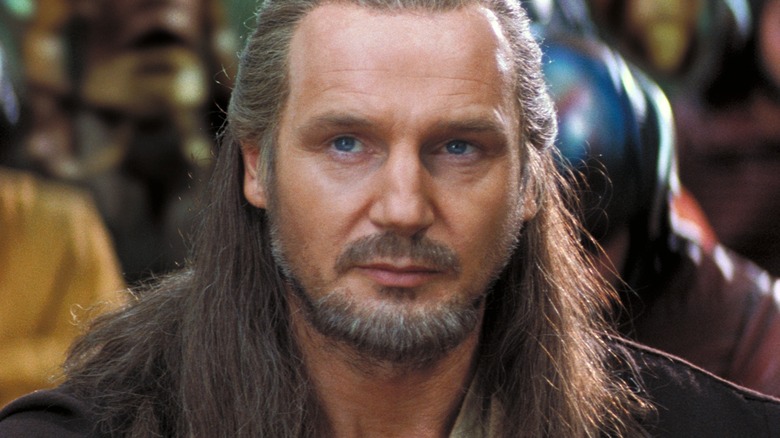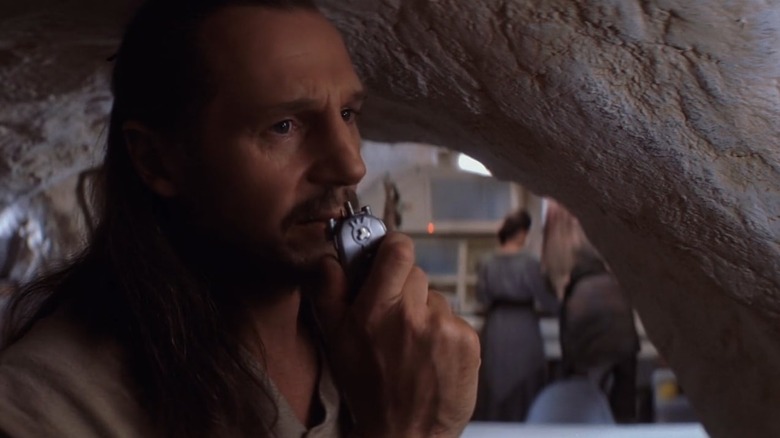Star Wars: The Phantom Menace's Massive Budget Didn't Stop Qui-Gonn Jinn From Using A Gillette Razor As A Phone
"Star Wars: Episode I – The Phantom Menace" was a massive deal when it was finally released in 1999 as the first "Star Wars" film to hit theaters in 16 years. "The Phantom Menace" didn't exactly receive the warmest welcome upon its release, garnering a disappointing 51% on Rotten Tomatoes. Still, the movie was very successful financially, pulling in over a billion at the worldwide box office on a budget of around $115 million.
Writer and director George Lucas managed a lot of impressive things with this budget, from large-scale battles to awe-inspiring lightsaber battles featuring characters like Qui-Gonn Jinn (Liam Neeson), Obi-Wan Kenobi (Ewan McGregor), and the evil Darth Maul (Ray Park). Still, even with a massive budget and tons of creative freedom, filmmakers can often make props from the simplest items, and "The Phantom Menace" is no exception here. In fact, one of the communicator devices that Jinn uses in the movie was made from, of all things, a Gillette razor.
Gillette is the best a Jedi can get
"Star Wars" fans may be aware of the communicator device that Jedi Qui-Gon Jinn uses throughout "The Phantom Menace" to converse with other Jedi while he's stranded on Tatooine. Well, according to CBS News, this device was created using a razor. More specifically, a Gillette Ladies Sensor Excel. It was altered to look more like a futuristic, phone-like piece of equipment for the purposes of the film. So if fans are looking to make their own, lore-friendly communicator, then all they'll really need is a razor and some slight modification skills.
It's honestly a bit surprising that Lucas and the prop department team went this route, but it does ultimately make sense. While the prequel "Star Wars" films have tons of CG-created sets and battles, Lucas has long relied on practical effects and props. In fact, while the prequels have become arguably infamous for their perceived overuse of CGI, there's actually a lot more practical effects than many fans may think. It tracks that Lucas and his team would work with what they had — that's always been the case when it comes to "Star Wars" anyway, especially in the original trilogy.

